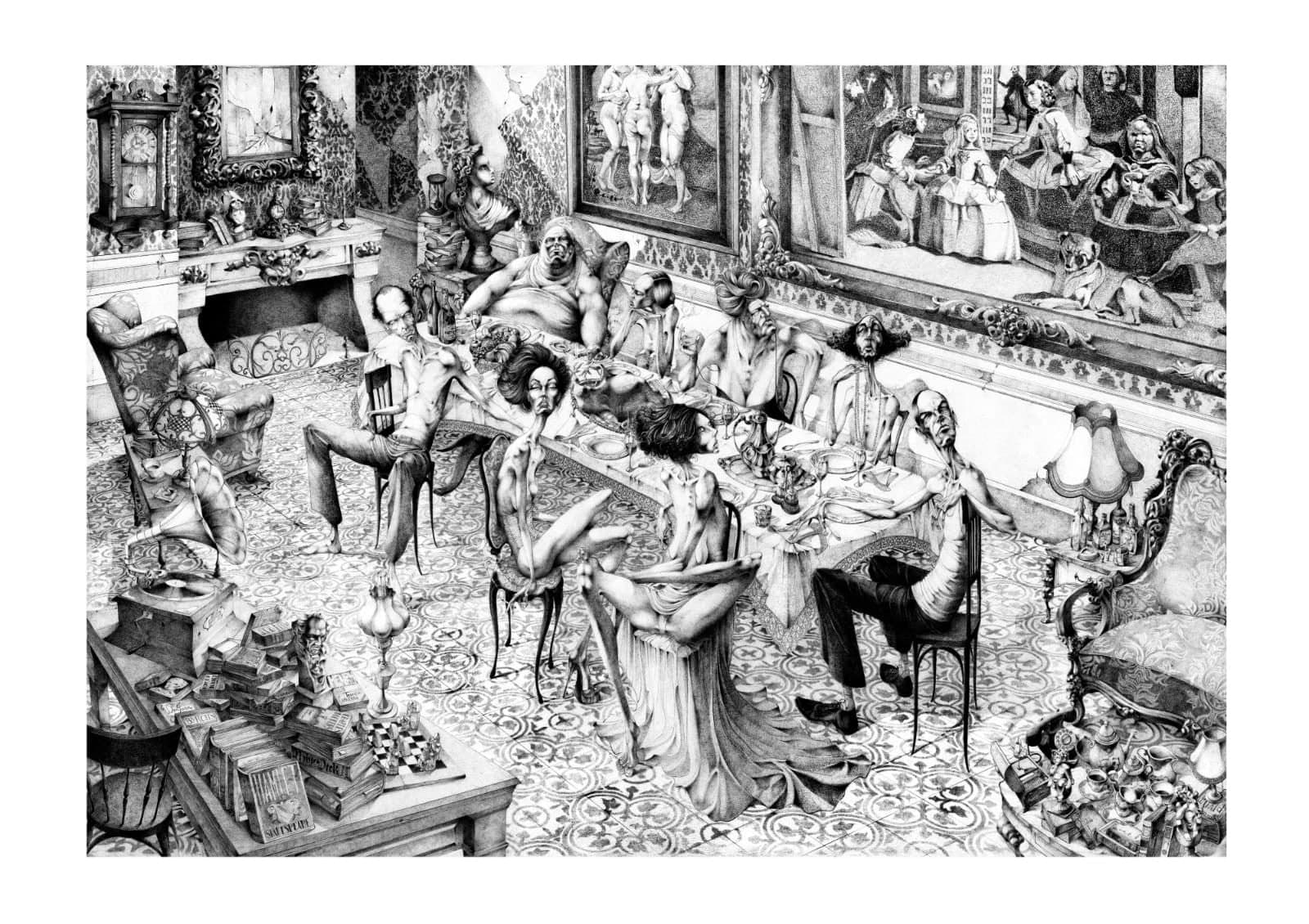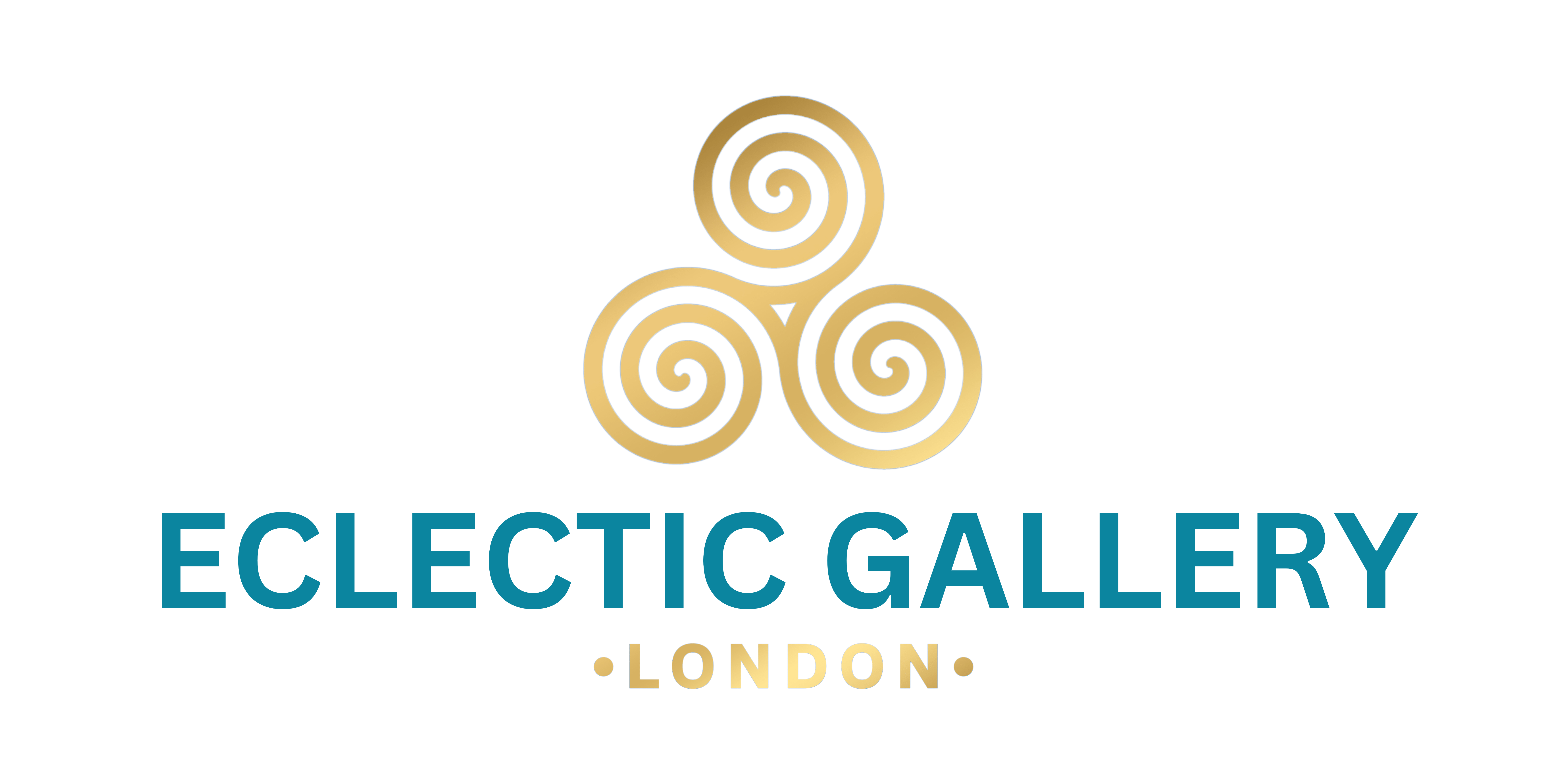



Adolfo Arenas Alonso Spain, b. 1972
Framed giclée print on hanhemühle paper hand finished by the artist.
29 7/8 x 44 1/8 in
Further images
In England around 1820 the term snob appeared at the universities of Oxford and Cambridge. This term "snob" in opposition to "nobs" makes it possible to differentiate the aristocratic students from the children of the bourgeois who with the industrial revolution integrate the university, reserved until then only for the aristocracy. These students who are not from "good families", announce this form of decadence.
The painting tells the story of the deadly sins when there were eight. Sadness was the last, hence the representation of eight characters in absolute decline. Pope Gregory the Great (920) reduced them to seven by grouping laziness and sadness.
The seven deadly sins: pride, gluttony, lust, greed, anger, envy, and laziness, are symbolically concealed. This painting serves to tell a story through hidden symbolism as in Flemish art.
PRIDE: “Las Meninas” by Velasquez, nothing seems more arrogant than this painting.
LUST: “The Three Graces” by Rubens
GOURMANDISE: The turkey on the table.
ANGER: the book of Moby Dick in the lower left corner, next to the bust of Goya, in which Captain Ahab manages to tip his crew into hatred and a terrible end, obsessed with the idea of killing Moby Dick, the white whale.
ENVY: The Othello manuscript is located under the bust of Goya. This book is placed behind the greatest of all books, Hamlet. The lies cause Othello to imagine the infidelity of his wife, Desdemona. Lago, inhabited by envy, does not believe Othello worthy of Desdemona's rank and love, and seeks to humiliate him.
GREED: Don Juan Tenorio masterpiece of Spanish literature but the book is placed under the poems of Lord Byron. Don Juan whose greed towards Doña Inés will lead him to murder.
In the lower right corner, there is a table with two angels and other books; thus, under the light of the lamp is placed the Divine Comedy by Dante Alighieri, which also stages the seven new deadly sins dictated by Gregory the Great. The end of the eighth sin – sadness – having been associated with laziness is symbolised by this broken mirror above the fireplace.




